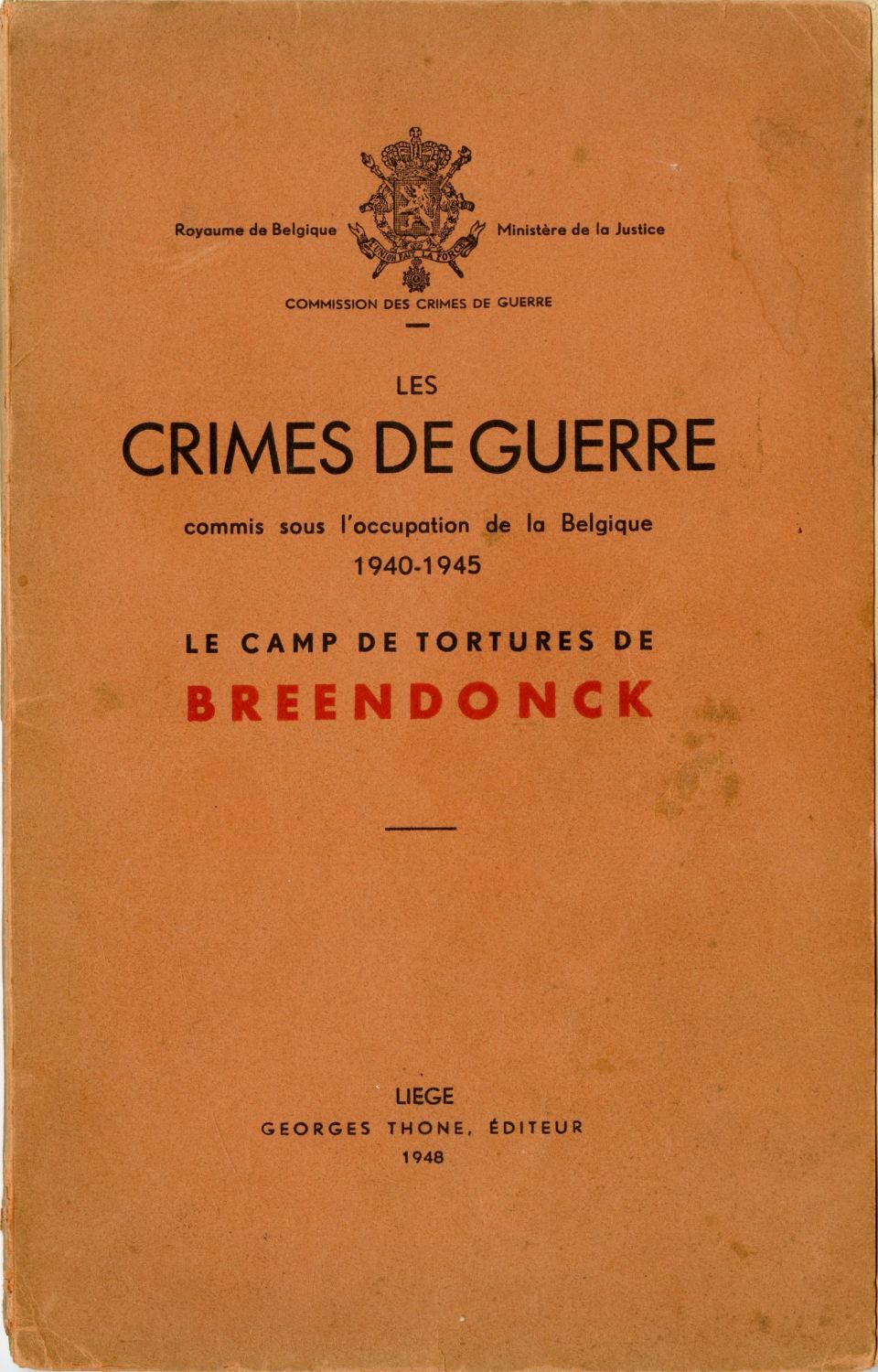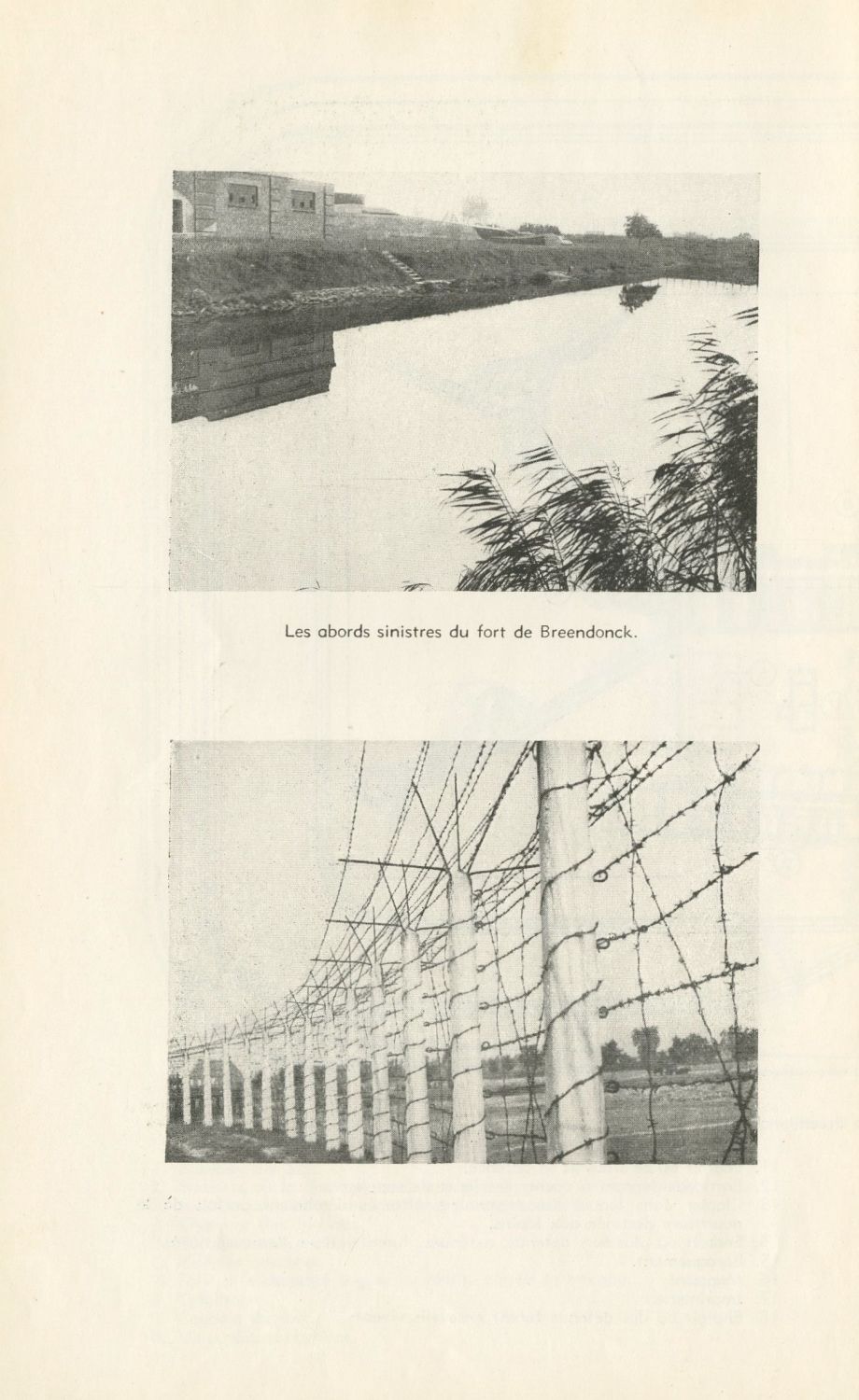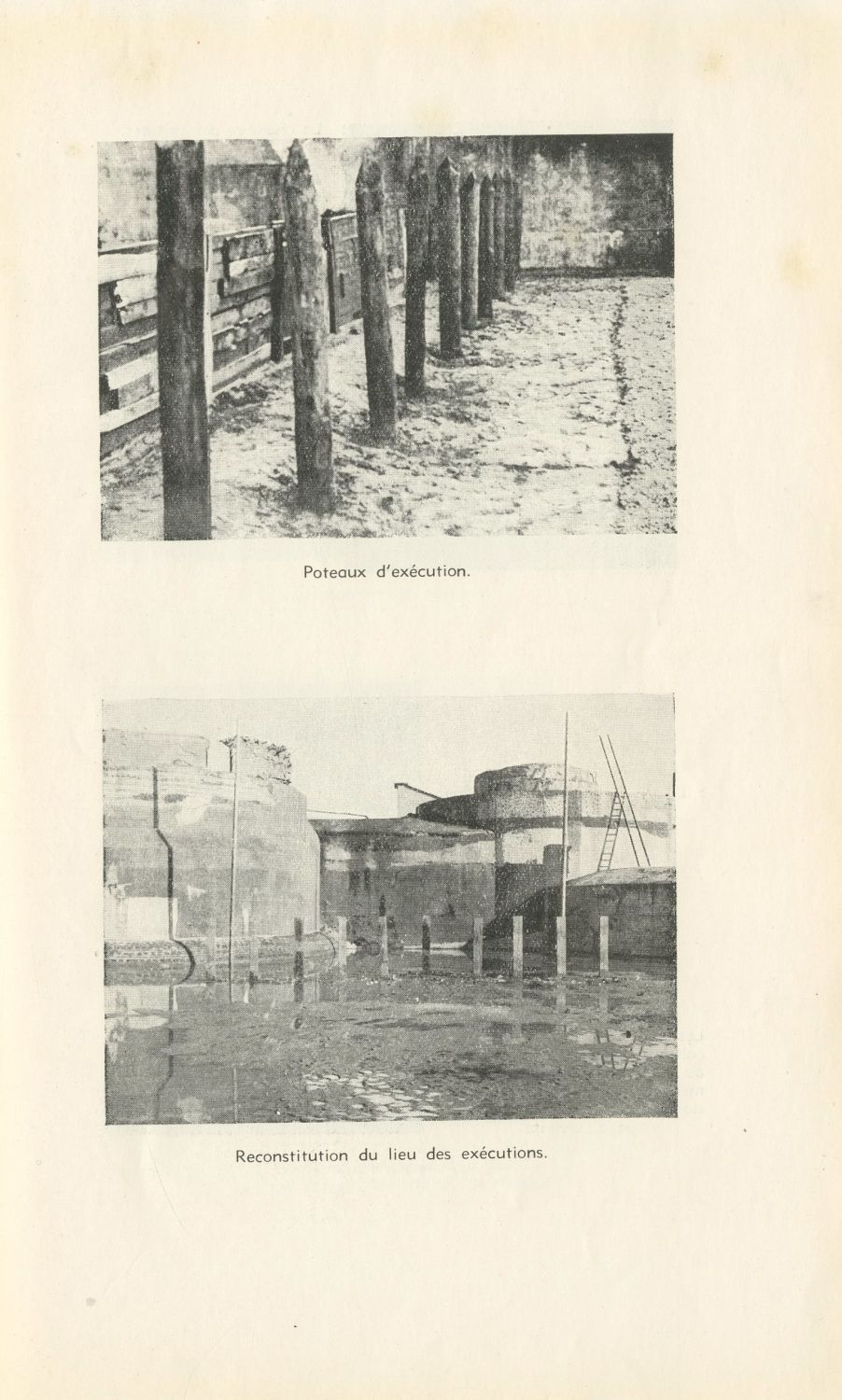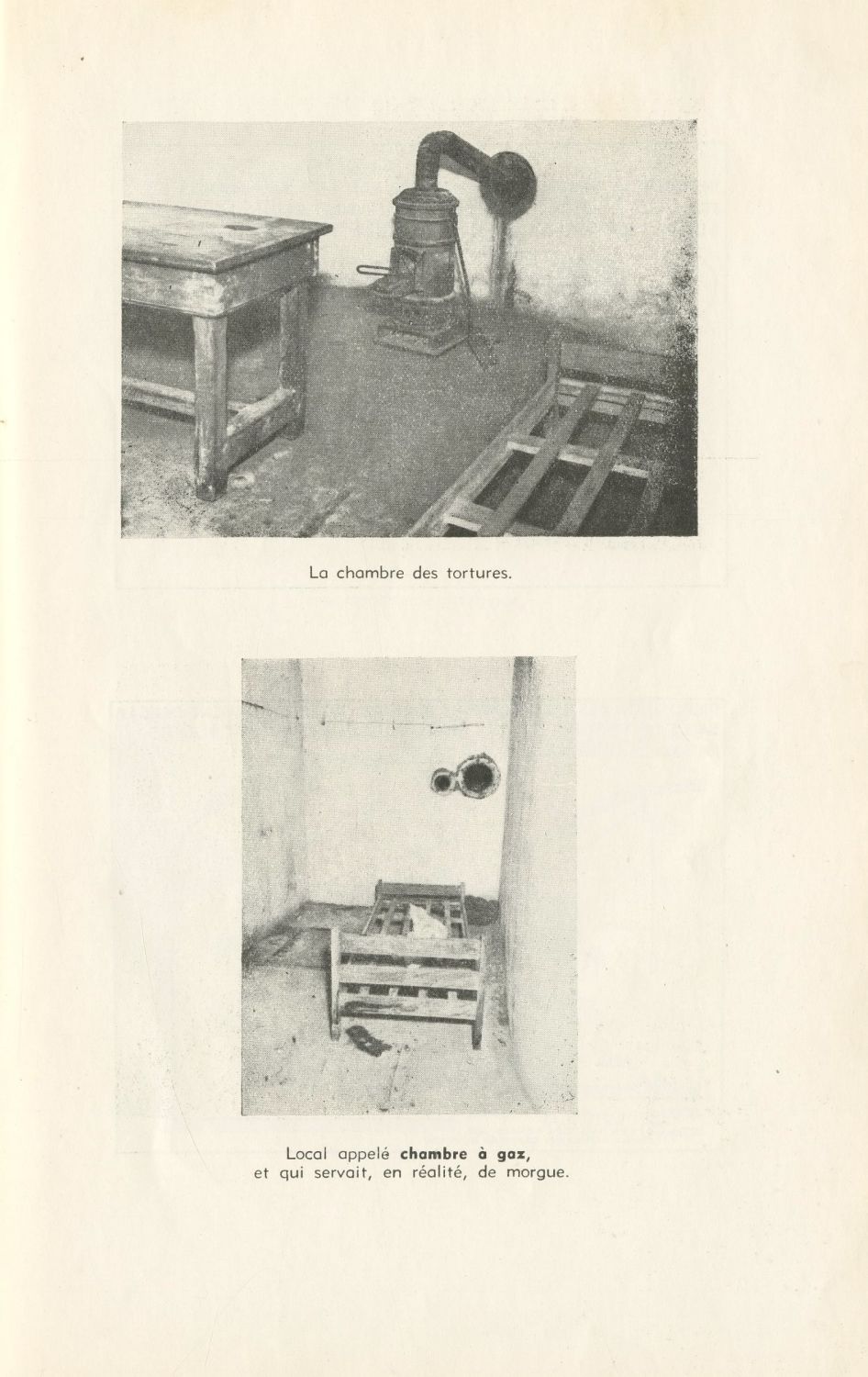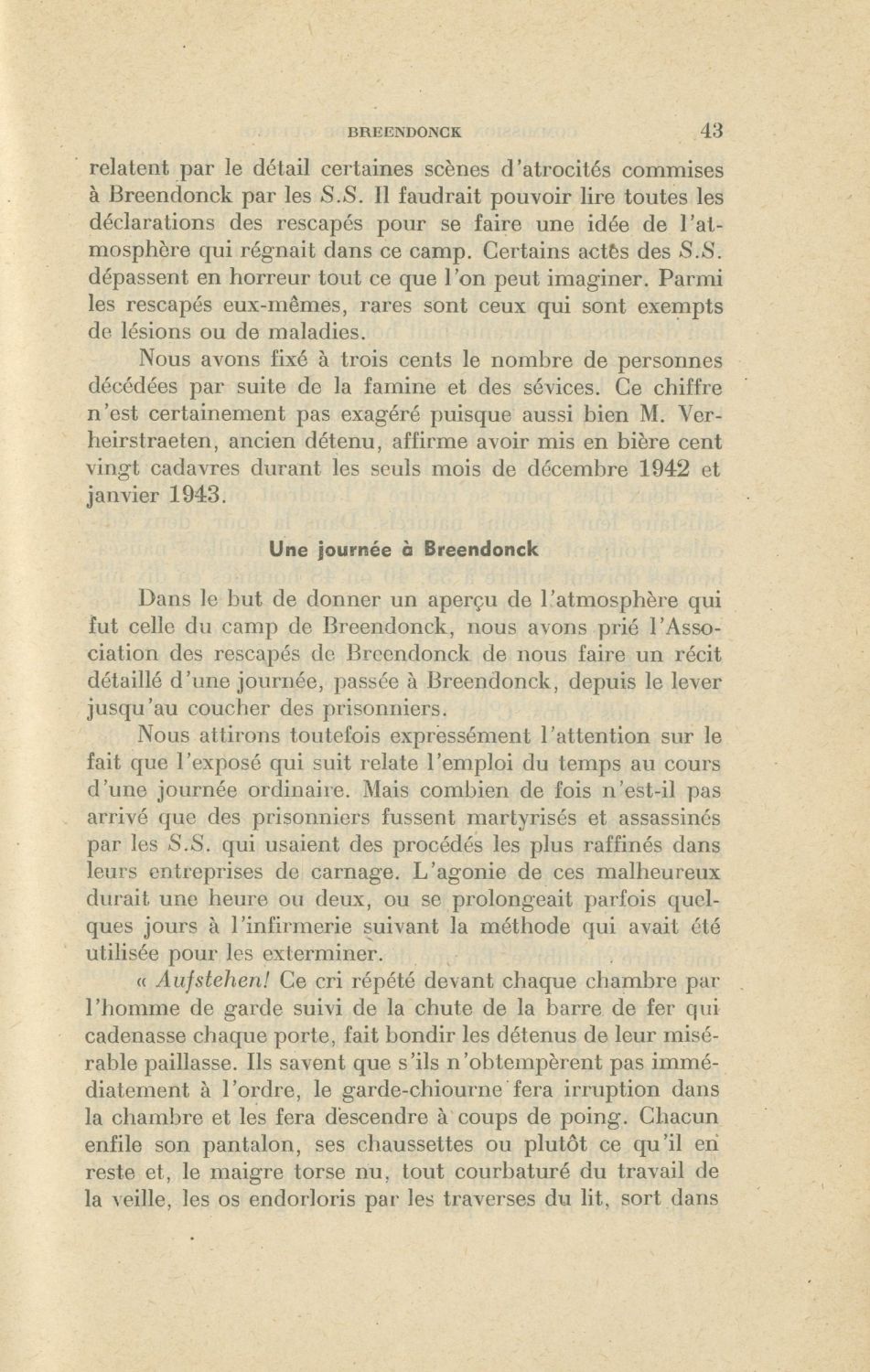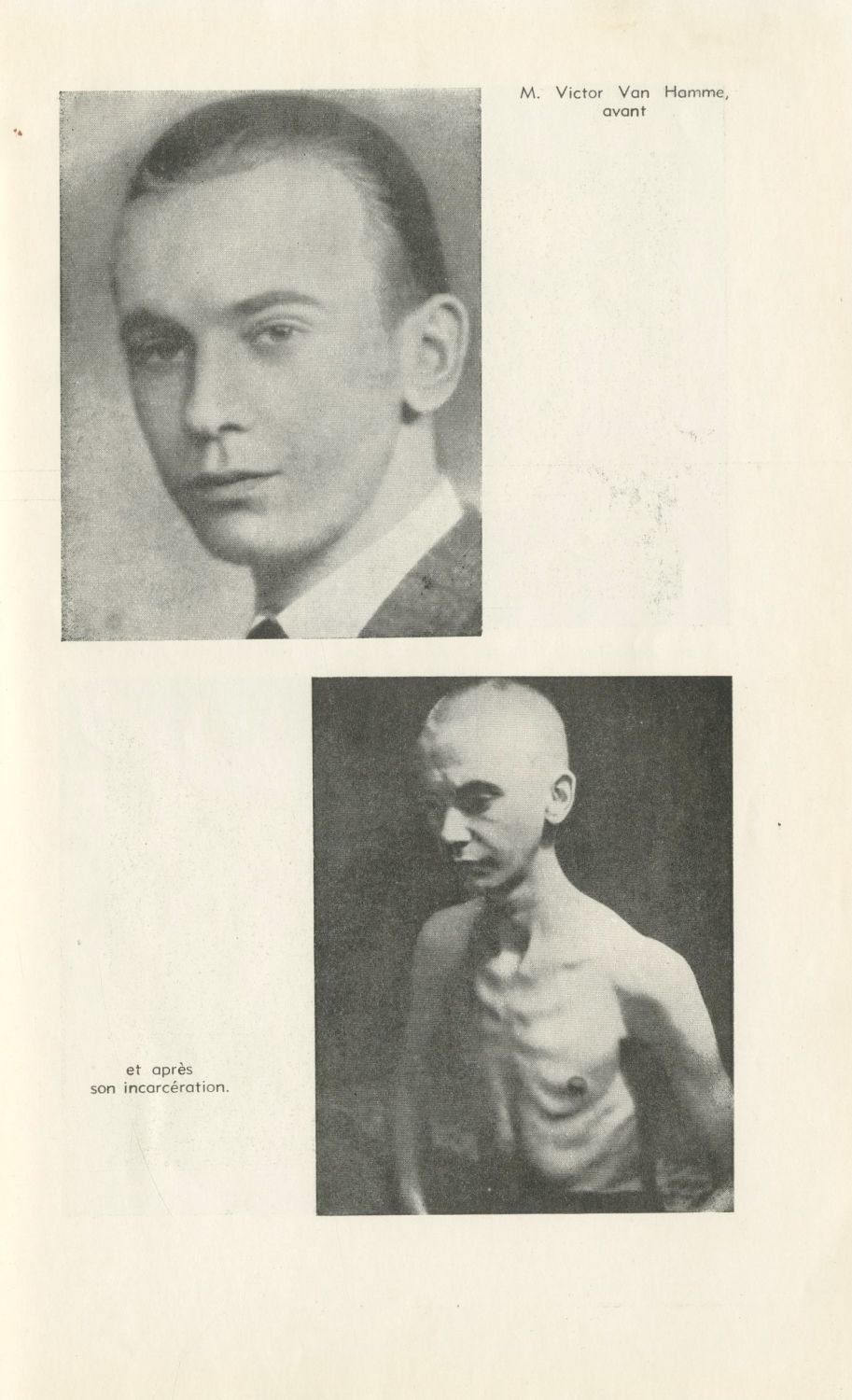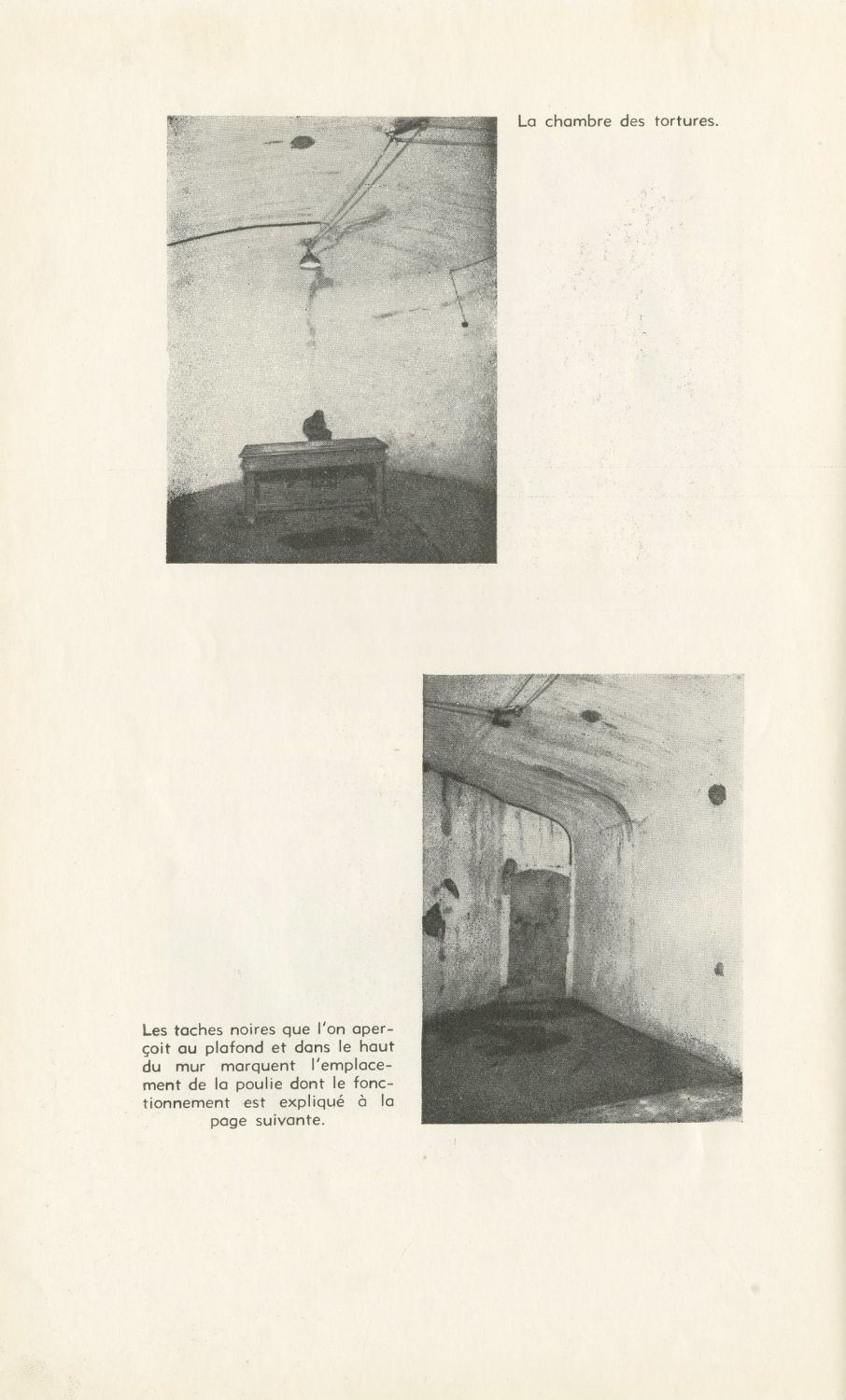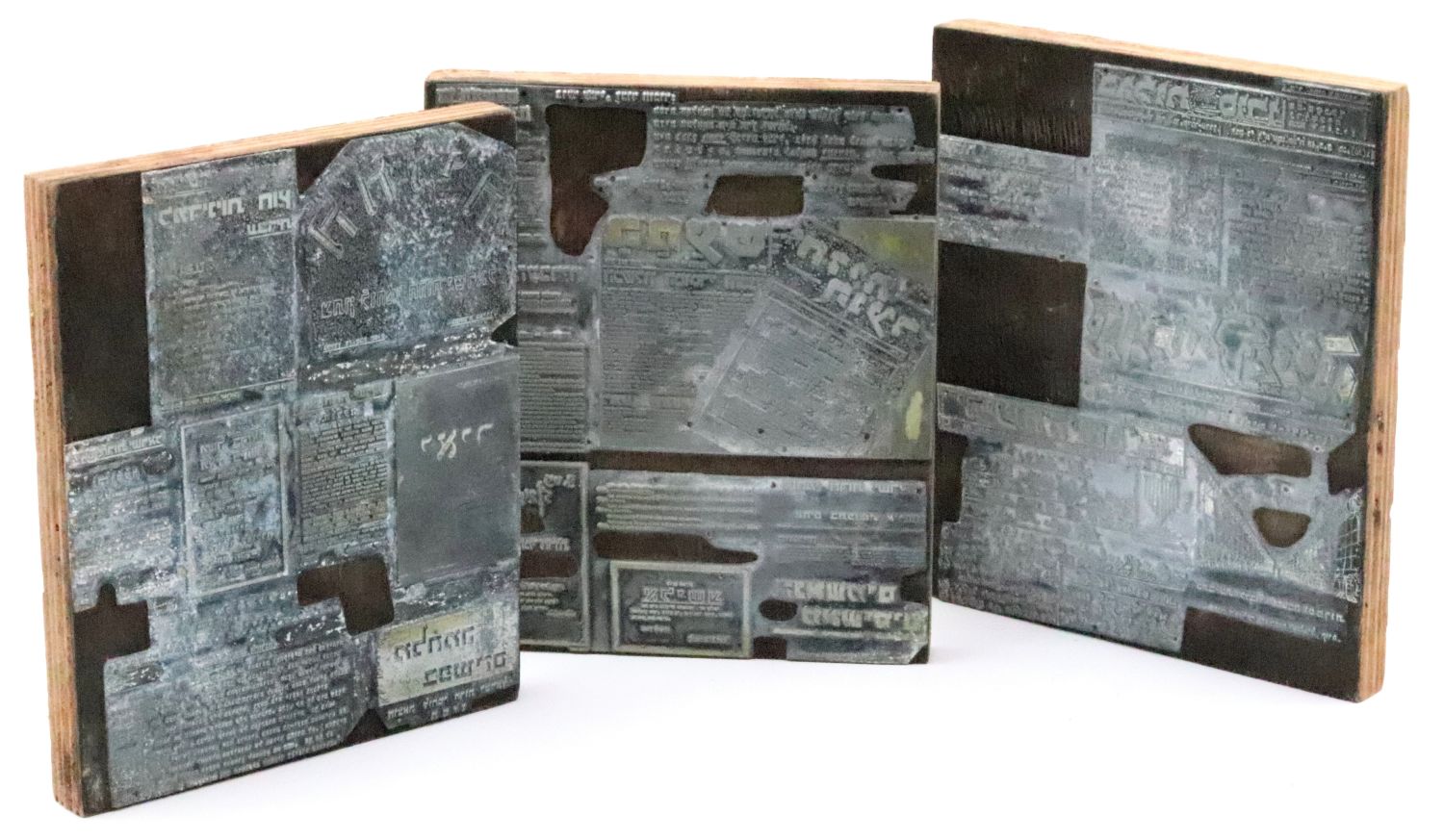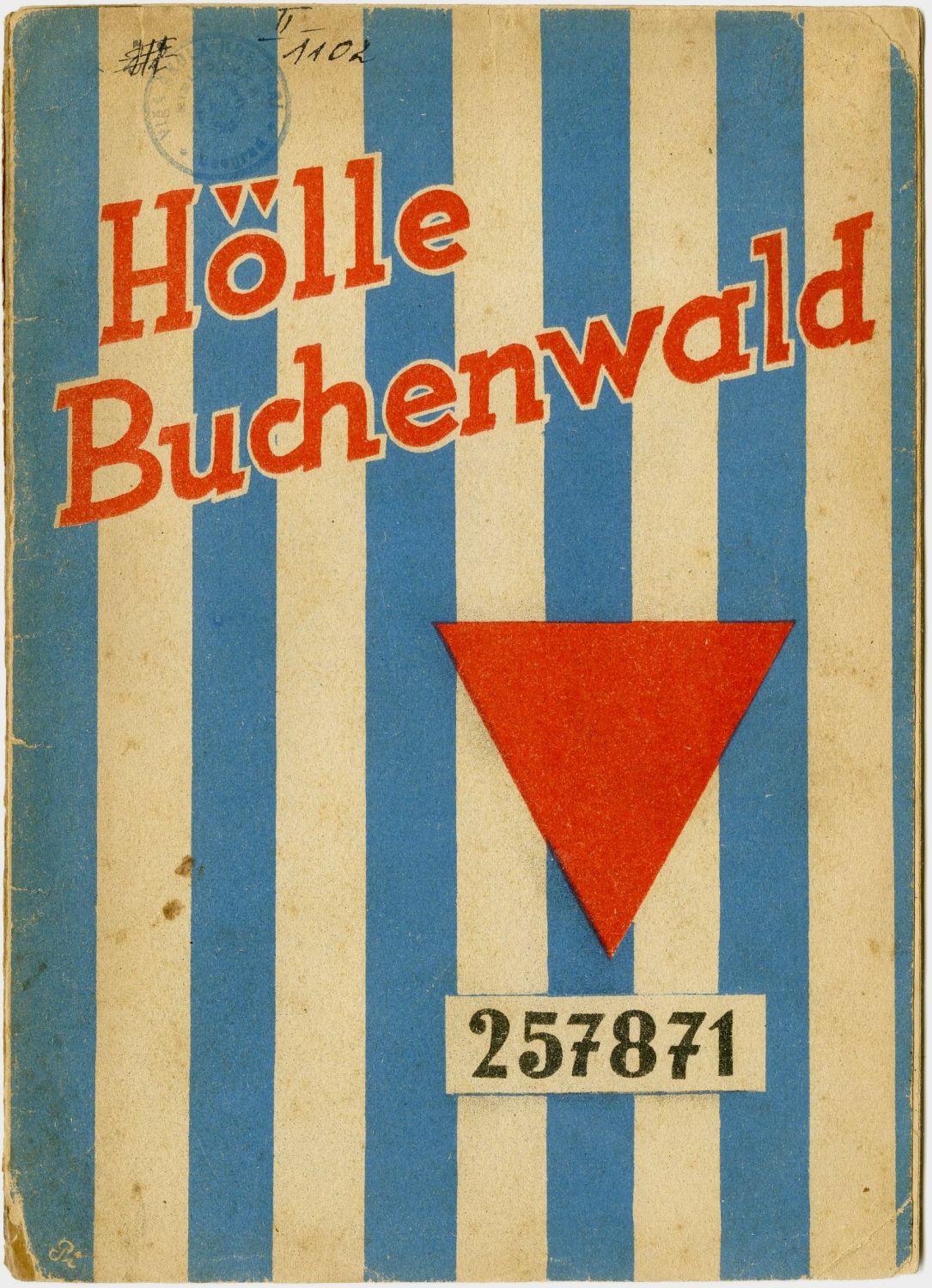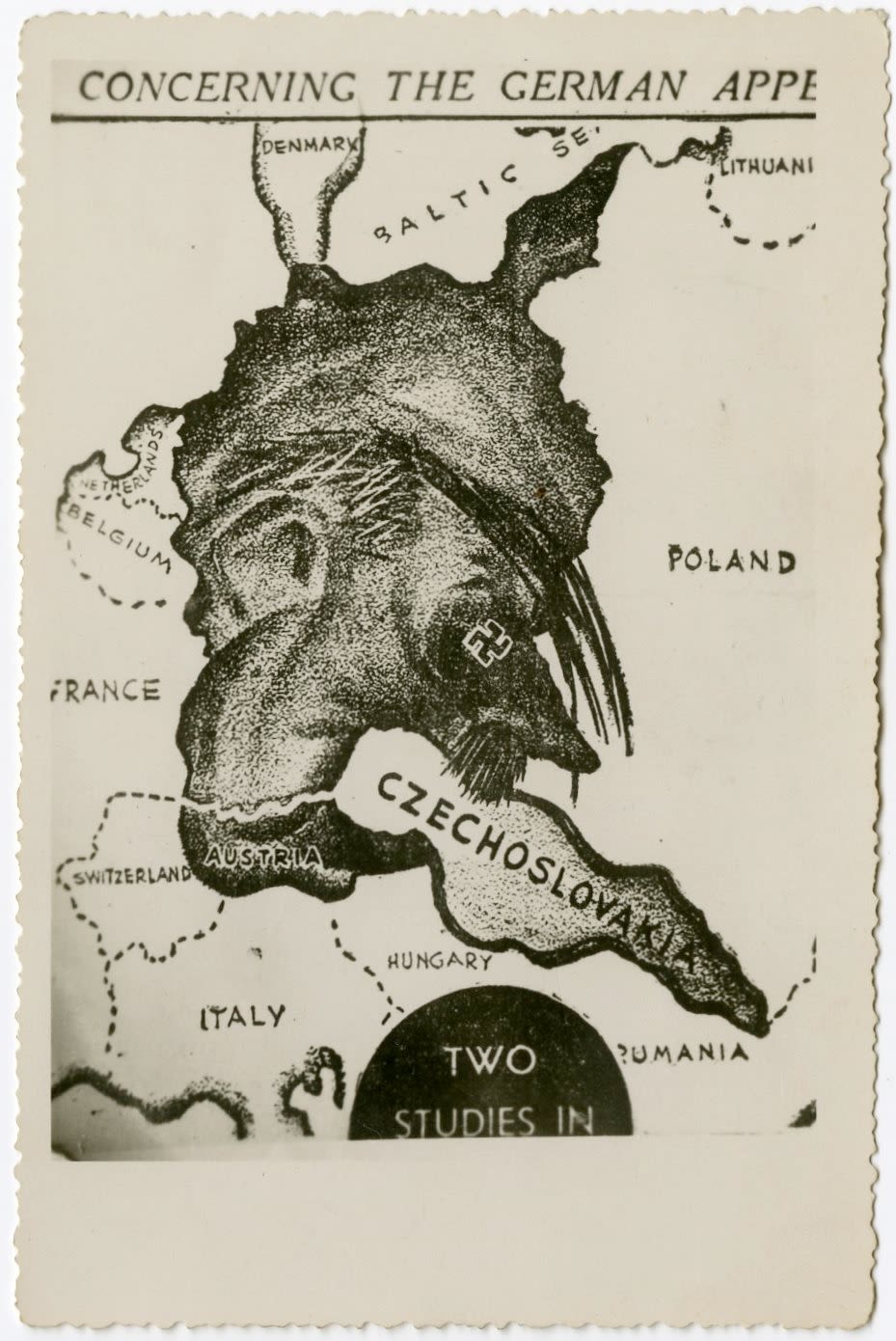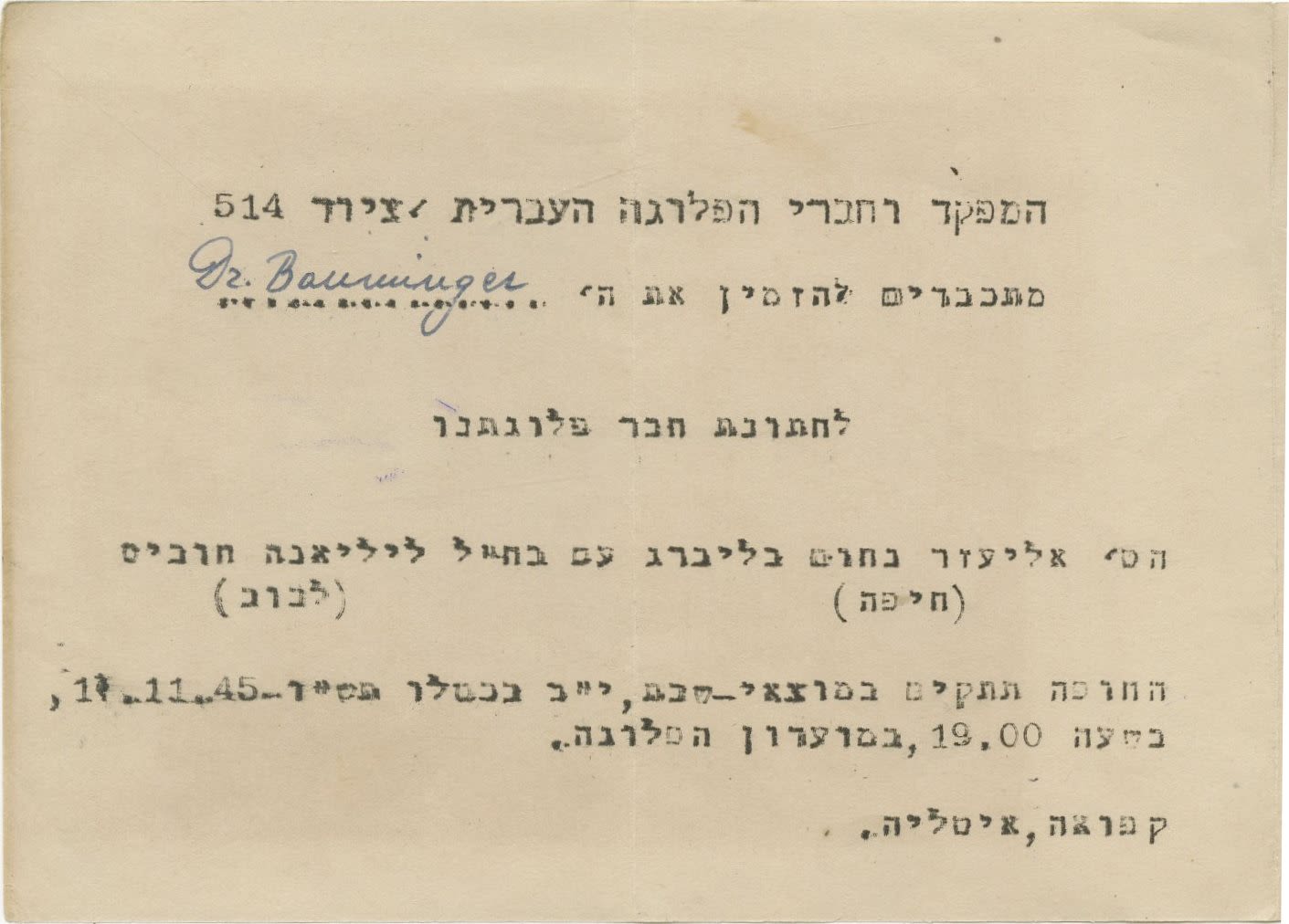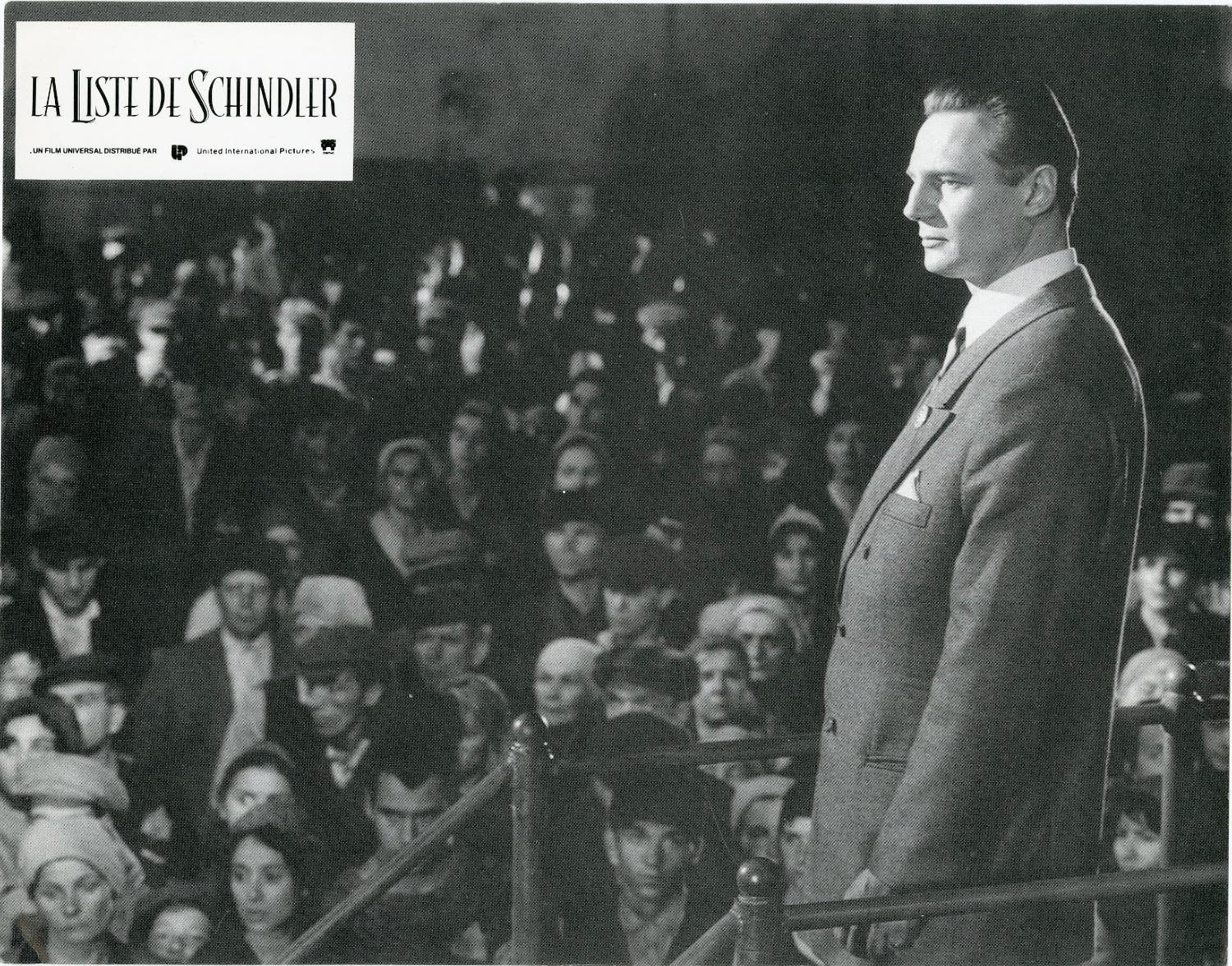Les crimes de guerre commis sous l'occupation de la Belgique 1940-1945 - LE CAMP DE TORTURES DE BREENDONCK - War Crimes Committed Under the Occupation of Belgium 1940-1945 - THE TORTURE CAMP OF BREENDONK. Liège [Belgium], 1948 - First edition. The first official report on the horrors committed by the Nazis in the Breendonk camp during World War II.
The detailed official report of the Belgian investigative committee established to investigate the Nazi crimes in the Breendonk camp and which submitted its findings in June 1947. The committee was established by special order of Prince Charles of Belgium on December 15, 1944 on the instructions of the "Heir Apparent ". The committee was tasked with investigating the Nazi crimes in the camp, with the aim of prosecuting Nazi war criminals who were free after the war and were involved in the horrors committed in Breendonk. The report contains a detailed overview of the camp's activities in the years 1940-1945. The total number of prisoners held in the camp during World War II, their origin, the transports from Breendonk to other camps, the manner in which the prisoners' personal belongings were confiscated, the horrific torture methods used by the Nazis (shocking testimonies received from prisoners who witnessed the atrocities), a horrifyingly detailed account of the various forms of abuse characteristic of each of the camp commanders, as well as the various roles of the SS officers in the camp and officials - all areas of responsibility of each one are detailed precisely, and more. Among other things, there is a harrowing testimony of a former Breendonk camp prisoner describing the arrival of a group of seventy five prisoners to the camp in April 1943 when "Punches and slaps are generously given for even the slightest movement", he describes the torture interrogations these prisoners underwent and their placement in forced labor usually involving digging and carrying soil and rocks under horrific conditions. Among other things, the report deals with the situation of the Jews in the camp, their inferior status - the special marking they were forced to put on their clothes, etc., and details how the abuse of Jews was the worst of all. The Jews were the only ones in the camp arrested because of their origin, and not as 'political prisoners', etc.
There is also a chapter under the headline "A Day in Breendonk" - the committee asked the Breendonk Survivors Association to describe for it the ongoing events of one day in the camp from dawn to dusk - the description here is one of the most detailed documentations in general of what happened in concentration camps, as it includes dozens of small details that the prisoners remembered which composed a complete picture of what a day in Breendonk camp looked like. The report also details the difficult hygiene conditions in the camp ("It is not an exaggeration to say that there was neither hygiene nor medical care in Breendonk camp"), as well as the manner in which executions were carried out in the camp, and finally the "Conclusions" and recommendation to prosecute the living war criminals of the camp: "The former prisoners of Breendonk, many of whom experienced the German concentration camps of Buchenwald, Neuengamme, Oranienburg, Mauthausen, and more, generally declare that both from a disciplinary point of view and from a nutritional point of view, Breendonk's regime was worse... The camps in Germany equipped with gas chambers and crematorium ovens were rightly described as extermination camps, we would prefer to say of Breendonk that it was a torture camp... Nowhere else was the atmosphere of constant terror that characterized Breendonk camp so systematically maintained".
The report is accompanied by photos of torture facilities, the different wings of the camp, diagrams and maps depicting the exact location of each area in the camp, former prisoners of the camp, as well as a chart of the various prisoner markings in the camp. Also appears is the "Declaration of Commitment Form" that every Breendonk prisoner had to sign stating he would never participate in activity against the Nazi regime.
This committee was also tasked with more broadly investigating Nazi crimes against Jews throughout Belgium and its surroundings, submitting that report a month earlier in May 1947 (see DYNASTY auction 21 item 110).
Breendonk formerly served as a fortified military base of the Belgian army between the cities of Antwerp and Brussels in Belgium. During the German occupation of Belgium in World War II it served as a detention camp, where Jews from the Belgian community were also imprisoned. On September 20, 1940 the first prisoners arrived at the fort. Imprisoned there were Belgian communists, resistance fighters, hostages captured by the Germans, Jews from the Belgian community as well as criminals. In the first year of the camp’s existence, Jews were about half the prisoner population there. They were held separately from the other prisoners. Imprisoned in the fort among others, was Rabbi Shlomo Ullman, Chief Rabbi of the Belgian Jewish community, and heads of the Belgian Jewish association. Prisoners stayed in the fort an average of about three months before being sent to concentration camps in Germany, Austria and Poland. The prisoners suffered from harsh living conditions, starvation, denial of medical treatment and cruel treatment by camp staff, and were put to forced labor; the Germans also conducted interrogations, torture and hangings in the fort. Various 'political' prisoners were interrogated under severe torture in the camp. The first German commander of the fort, Phillip Schmitt, was tried in Belgium in 1949, convicted, sentenced to death and executed in 1950.
86 p. Good - Very good condition.

